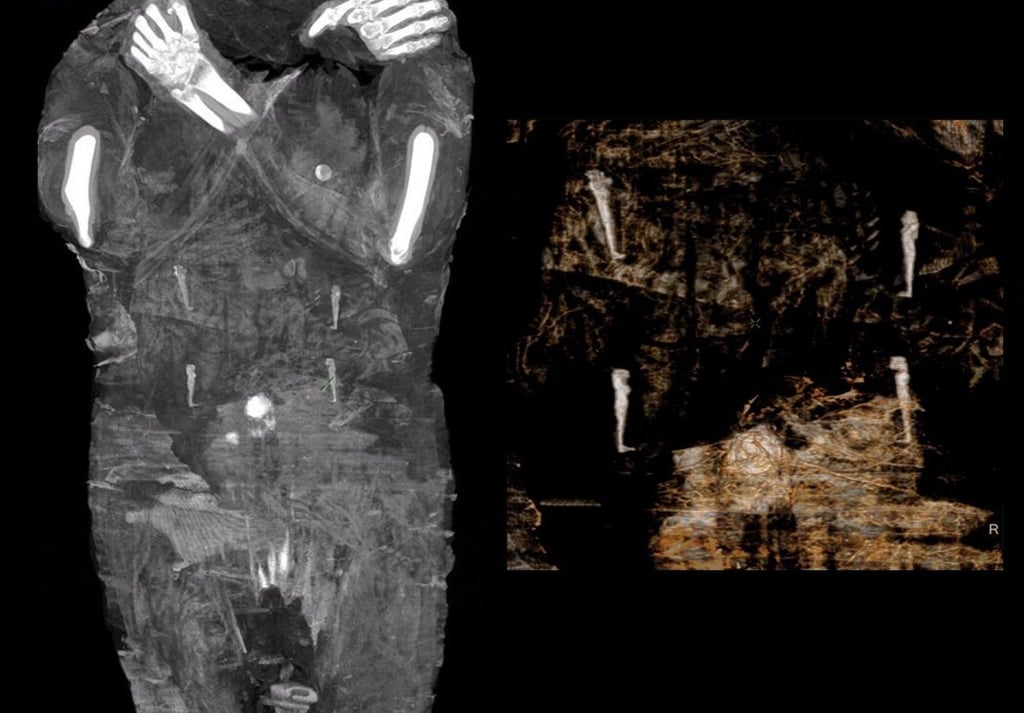World’s first pregnant Egyptian mummy discovered in Poland
- Scientists saw a tiny foot when looking at X-ray images of the 2,000-year-old remains
- The mummy was originally thought to be a male priest, but is now believed to be a woman

Polish scientists said on Thursday they have discovered the world’s first pregnant Egyptian mummy while carrying out scans on the 2,000-year-old remains kept at the National Museum in Warsaw.
“My husband Stanislaw, an Egyptian archaeologist, and I looked at the X-ray images and noticed a familiar sight for parents of three children in the belly of the dead woman – a little foot!” Marzena Ozarek-Szilke, an anthropologist and archaeologist at the University of Warsaw, told journalists.
Further analysis revealed the whole fetus and scientists working on the Warsaw Mummy Project believe the woman was between 20 and 30 years old and was 26-30 weeks pregnant.
“We do not know why the fetus was not taken out of the belly of the deceased during mummification,” said Wojciech Ejsmond from the Polish Academy of Sciences, another project participant.

“That is why this mummy is truly unique. We have not been able to find any similar cases. This means that ‘our’ mummy is the only [one] recognised in the world with a fetus,” he said.
Ozarek-Szilke speculated that there may have been an effort to “camouflage the pregnancy … or, perhaps, it had some significance related to beliefs and rebirth in the afterlife”.